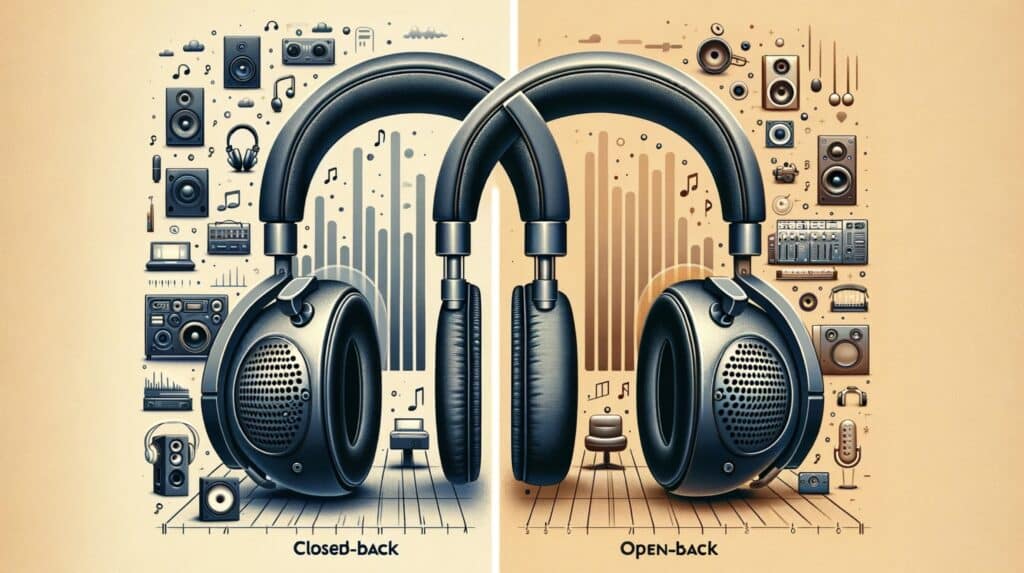- What are the primary reasons for choosing closed-back over-ear headphones in recording studios?
- How do closed-back headphones contribute to sound isolation in a studio environment?
- In what ways do closed-back headphones prevent sound leakage during studio recordings?
- What are the differences in sound leakage and isolation between closed-back and open-back headphones?
- How do comfort and durability factor into the choice of closed-back headphones for extended studio use?
In the world of audio production, sound isolation is a critical component for achieving high-quality recordings. Recording studios extensively use closed-back over-ear headphones to create an isolated listening environment. This article explores the reasons behind this choice, detailing the benefits and functionalities of these headphones.

The Mechanics of Closed-Back Headphones
Design and Build
Closed-back over-ear headphones are designed with a solid outer shell that encloses the earcups. This design plays a pivotal role in sound isolation.
Sound Isolation Capabilities
The closed-back design significantly reduces the intrusion of external noises, ensuring that the audio inside the headphones is heard without interference. This is crucial in a studio setting, where external sounds like traffic, HVAC systems, or even other instruments can disrupt the monitoring process.
Sound Leakage Prevention
One of the key features of closed-back headphones is their ability to prevent sound leakage.
Importance in Studio Recordings
Sound leakage, where music or metronome beats escape from the headphones, can be detrimental in a studio. Such leakage can be picked up by sensitive studio microphones, potentially contaminating the recording. Closed-back headphones minimize this risk, ensuring cleaner recordings.
Acoustic Performance and Accuracy
Faithful Sound Reproduction
High-quality closed-back headphones offer precise and accurate sound reproduction, an essential factor for audio engineers and musicians.
Detailing in Mixing and Mastering
During mixing and mastering, the smallest details in sound can make a significant difference. Closed-back headphones provide a clear and undistorted representation of the audio, enabling professionals to make precise adjustments to the mix.
Durability and Comfort in Studio Environments
Longevity and Build Quality
Recording studio equipment must be durable and long-lasting. Closed-back headphones are often built with this in mind, offering robust construction that can withstand the rigors of studio use.
Comfort for Extended Use
Ergonomic Design
Studio sessions can be lengthy, and wearing headphones for extended periods can be uncomfortable. Many closed-back models are designed with ample padding and ergonomic features, ensuring comfort even during long studio sessions.
Comparative Analysis: Closed-Back vs. Open-Back Headphones

Table: Feature Comparison
| Feature | Closed-Back Headphones | Open-Back Headphones |
|---|---|---|
| Sound Isolation | Excellent | Poor |
| Sound Leakage | Minimal | High |
| Durability | Generally Higher | Varies |
| Comfort | Designed for Long Sessions | Varies |
This table highlights the key differences between closed-back and open-back headphones, underlining why closed-back models are preferred in studio settings.
Conclusion: The Indispensable Role of Closed-Back Headphones in Studios
Closed-back over-ear headphones are an indispensable tool in recording studios. Their ability to isolate sound, prevent leakage, and provide accurate audio reproduction makes them a preferred choice for professionals. Combined with their durability and comfort, these headphones play a vital role in ensuring the production of high-quality audio recordings.
This comprehensive understanding of why closed-back over-ear headphones are chosen for sound isolation in recording studios underscores their importance in the audio production industry.
